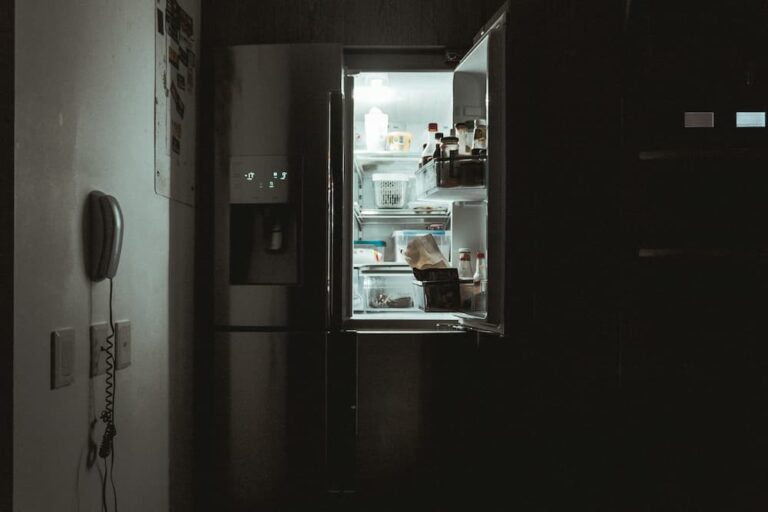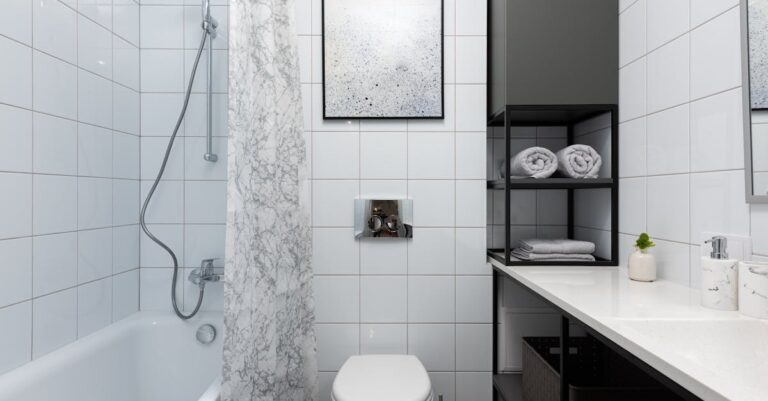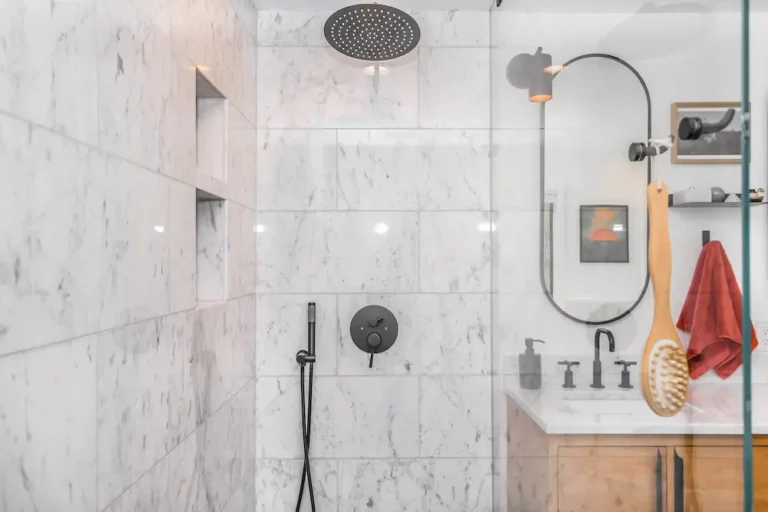Maple Syrup Smell in House: Identifying and Addressing the Cause
Maple syrup is a delightful treat that many enjoy on their pancakes and waffles, but catching a whiff of it throughout your house can be perplexing and concerning. The sweet, unmistakable maple syrup smell could indicate a possible issue that needs to be addressed. This article will discuss the origins of the maple syrup-like smell and what to do if you experience it in your home.
First, it’s essential to identify and recognize the maple syrup smell for what it is and determine if there are any health concerns associated with it. Then, uncovering the source of the smell and taking necessary measures to address and remove it is crucial. Finally, learning various prevention strategies can help keep your home free of this unexpected and unwanted odor.
Key Takeaways
- Recognize and understand the origin of the maple syrup smell in your house
- Address and remove the source of the odor to protect your home from potential issues
- Implement prevention strategies to maintain a pleasant and odor-free living environment
Identifying Maple Syrup Smell in House
Common Residential Scents
Identifying specific smells in a home can sometimes be challenging, as there are many common scents that can contribute to a pleasant or unpleasant atmosphere. The aroma of maple syrup is distinct and primarily characterized by the following traits:
- Sweet
- Woody
- Slightly smoky
It is essential to not mistake the maple syrup smell with other similar odors that appear in residential spaces, such as:
- Baked goods
- Air fresheners
- Scented candles
Causes of Sweet Odor
There are several potential reasons for a maple syrup smell in your house. Commonly, these causes can include:
- Cooking or baking activities: If someone in your home has been cooking or baking with ingredients like maple syrup, the smell can linger in the air for a while.
- Maple syrup spill: Accidental spills in the kitchen, pantry, or storage areas can produce a long-lasting odor if not cleaned properly, especially in warm and damp conditions where the scent can intensify.
- Phenol-based compounds: Certain cleaning products, air fresheners, or building materials release phenol-based compounds that can mimic the smell of maple syrup. It is crucial to ensure that these items are stored and used appropriately to prevent any unintended odor issues.
- Malfunctioning appliances: In some cases, electrical appliances, like toasters or stovetops, may produce a sweet maple syrup-like smell if they malfunction or overheat. If the odor appears suddenly and is not attributable to cooking or spills, inspect your home appliances for signs of wear or overheating.
By paying close attention to the sources and nature of the maple syrup odor in your home, taking immediate action when necessary, and maintaining a well-ventilated, clean living space, you can prevent and address the issue effectively.
Possible Health Concerns
Respiratory Issues from VOCs
Volatile organic compounds (VOCs) are often released during the production or cooking process of maple syrup. In some cases, these compounds can cause respiratory issues, particularly for individuals with pre-existing respiratory conditions such as asthma or allergies. It is essential to ensure proper ventilation in areas where maple syrup is being produced or heated to minimize this risk.
Maple Syrup Urine Disease (MSUD)
Maple syrup urine disease (MSUD) is a rare genetic metabolic disorder that affects an individual’s ability to process certain amino acids. The condition is named for the distinctive maple syrup odor present in the urine of affected individuals. Although the smell of maple syrup in your house is unlikely to be a direct result of MSUD, being aware of the potential health concerns related to this disease can be helpful.
The primary cause of MSUD is the deficiency of an enzyme known as branched-chain alpha-keto acid dehydrogenase complex (BCKDC), which is responsible for breaking down the amino acids leucine, isoleucine, and valine. These amino acids are commonly found in protein-rich foods like methi (fenugreek) seeds and leaves.
If not managed properly, MSUD can lead to life-threatening complications in the affected individual. Treatment methods include:
- A special diet that limits the intake of protein-rich foods
- Monitoring of blood amino acid levels
- Supplements, such as vitamins and minerals
- Liver transplantation in some severe cases
It is important to consult a medical professional if you suspect a family member has MSUD or if you require guidance on managing the condition.
Source of Smells
Mold and Moisture
Mold and moisture can be the main culprits behind the maple syrup smell in your house. High humidity levels and poorly ventilated areas, such as basements and bathrooms, provide a conducive environment for mold growth. Additionally, water damage and organic material present in crawl spaces can lead to bacterial growth, further exacerbating the issue.
To prevent mold and moisture issues:
- Regularly check for leaks and water damage
- Ensure proper ventilation in bathrooms and basements
- Clean and maintain crawl spaces
Cooking Ingredients
Certain cooking ingredients, such as vinegar, can also emit a maple syrup-like smell. This is especially noticeable when cooking in a closed space or using large quantities of these ingredients. The odor may linger after cooking, which can create an unpleasant environment in your home.
To minimize cooking-related smells:
- Use exhaust fans while cooking
- Open windows to allow proper air circulation
- Store cooking ingredients in airtight containers
HVAC System
Your home’s HVAC system plays a significant role in the circulation of air and smells. If there is a furnace leak or an insect infestation in the ductwork, the maple syrup smell may be more prominent. Furthermore, neglected HVAC system maintenance can lead to the growth of mold and bacteria.
To maintain a healthy HVAC system:
- Schedule regular maintenance checks
- Replace filters as needed
- Address any leaks or infestations promptly
Plumbing Issues
Plumbing issues can also contribute to unpleasant odors in your home. For instance, basements with poor drainage systems are susceptible to water damage and mold growth. Bathrooms with insufficient ventilation can also harbor moisture and bacteria.
To reduce plumbing-related problems:
- Inspect your home’s drainage system regularly
- Keep bathroom ventilation in optimal working condition
- Address any plumbing concerns as soon as possible
Addressing the Smell
Professional Inspection
If you cannot identify the source of the maple syrup smell in your house, it may be time to call in a technician. They can perform a thorough inspection to rule out any hidden hazards such as a gas leak or hidden mold. Both of these issues can lead to serious health problems, including respiratory problems. A professional can also measure humidity levels in different areas of your home, which might be contributing to the aroma.
DIY Solutions
For those who prefer to tackle the issue themselves, there are several do-it-yourself options to address the maple syrup smell:
- Dehumidifier: Using a dehumidifier can help reduce humidity levels in your home, making it less conducive for mold growth and potentially improving the smell. Make sure to empty the dehumidifier regularly and maintain it according to the manufacturer’s instructions.
- Baking soda: Sprinkle baking soda on carpets and upholstery, let it sit for a few hours, and vacuum. Baking soda is a natural odor absorber and can help eliminate or reduce the maple syrup smell.
- Increase humidity: In some cases, the aroma might be due to overly dry air. Consider using a humidifier to balance the humidity levels within your home.
Make sure to monitor the situation and consult a professional if the smell persists, or if any new problems arise.
Prevention Strategies
Maintaining a Healthy Home Environment
To prevent a maple syrup smell in your house, it’s crucial to focus on maintaining a healthy home environment. One of the primary culprits is VOCs (Volatile Organic Compounds) emitted from household products and cleaning agents. Limit the use of air fresheners, as they may contain high levels of VOCs. Instead, consider using natural essential oils that offer a pleasant aroma without harmful chemicals.
Introduce houseplants that help filter indoor air and remove VOCs, such as Spider plants, Peace Lilies, and Snake plants.
It’s also necessary to address any issues related to an air conditioning leak. An AC leak may cause increased humidity and develop a musty smell in your home. Get your AC coils checked and repaired by a professional to avoid such issues.
Regular Cleaning Practices
Adopting regular cleaning practices can also help prevent unpleasant smells in your house. Here are some suggestions:
- DIY solutions: Make homemade cleaning solutions using ingredients like baking soda, vinegar, and lemon, which effectively remove odors without being harsh on your surfaces.
- Air out your home: Open windows to let fresh air in and improve air circulation. This practice is especially helpful to eliminate lingering odors.
- Regularly replace air filters: Ensuring your air filters are clean and replaced periodically helps maintain good indoor air quality.
- Inspect for mold and mildew: Check for hidden mold and mildew in your home, as these can contribute to odors. Clean affected areas and keep humidity levels under control to prevent future mold growth.
In conclusion, maintaining a healthy home environment and regular cleaning practices will help you prevent the maple syrup smell in your house. Always opt for natural solutions and products to reduce your exposure to VOCs and keep your indoor air fresh and clean.
Conclusion
Maple syrup smell in the house can be perplexing and may raise questions. There are various reasons for this smell to occur, and understanding them can help identify the source and find a solution. Living with this smell may cause discomfort and concerns, so it’s essential to address the issue promptly.
As a confident, knowledgeable, and neutral source, let’s look at the potential causes. Some possible reasons might be a natural gas leak, hygiene issues, or the presence of bacteria in plumbing systems. To address each cause, we recommend contacting a professional to investigate gas leaks, maintaining cleanliness in the kitchen and food storage areas, and inspecting the plumbing for bacterial growth. Following these steps, you can stay clear of the smell and keep your living space smelling fresh and clean.
Frequently Asked Questions
Why does my heater emit a maple syrup odor?
A maple syrup odor coming from your heater could be a result of different factors. One common reason is the presence of bacteria or mold growing in the heating system. When the heater is turned on, the warm environment allows these microorganisms to thrive and release the maple syrup-like smell. Another possibility is the breakdown of certain materials within the heating system, which can release a sweet odor.
Can smelling syrup indicate a stroke?
While smelling something sweet may not always indicate a stroke, some people have reported olfactory hallucinations as a symptom. It is important to consult a healthcare professional if you are suddenly experiencing unexplained smells, as it could signify an underlying issue with your brain or nervous system.
Is the HVAC system responsible for the maple syrup smell?
If the maple syrup smell is present throughout your home, it may indeed be due to your HVAC system. A buildup of bacteria, mold, or other particles can spread across your living space when the HVAC is operating. Ensuring regular maintenance and inspection of your HVAC system can help prevent these smells.
Does COVID-19 cause a maple syrup smell?
There have been anecdotal reports of people experiencing changes in their sense of smell due to COVID-19. However, there is currently no scientific research to confirm a direct link between the coronavirus and experiencing a maple syrup smell specifically.
What chemicals can mimic a maple syrup odor?
Some chemicals, such as HTR and antifreeze, can produce a sweet, maple syrup-like odor when heated or burned. These substances can be found in different household items, appliances, and even motor vehicles. Proper handling and storage of these chemicals can help prevent the release of unpleasant smells.
What could cause a maple syrup scent in the bathroom?
A maple syrup scent in the bathroom could be caused by a few factors, such as a buildup of bacteria or mold in pipes or drain systems. Regular cleaning and maintenance can help keep these smells at bay. In certain cases, the sweet odor could also result from chemical reactions between water and bathroom materials, like metal pipes or fixtures.



